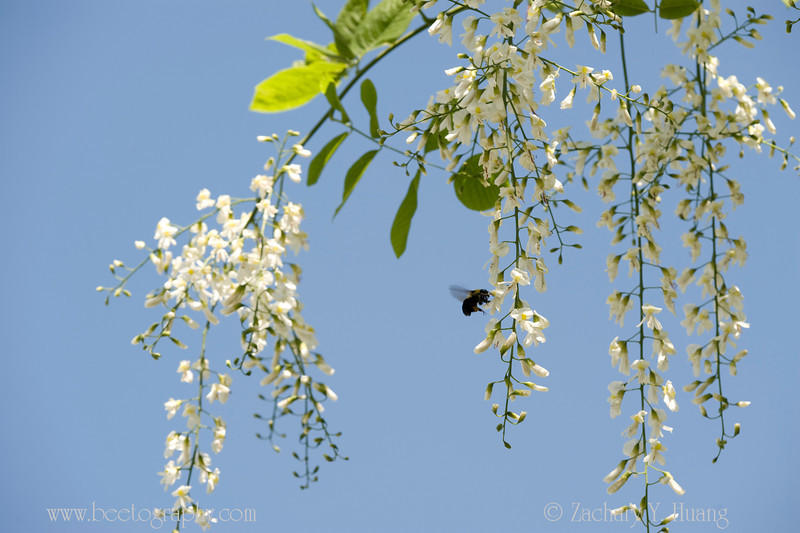I knew this one was a legume since during my first driving by, I thought it was a black locust. I had taken photos of bees on black locusts but that day, after the MBA board meeting, I suddenly wanted to take some more shots. Maybe that tree was just too pretty to pass. I thought it was close by, but could not find the tree after walking one whole mile with a 30 lb bag (I forgot to unload my laptop computer!). I stopped under a big horse chestnut tree (almost near Harrison!) with white flowers and was wondering why I would mistook that tree for a black locust. I walked back toward my packing lot and looked more closely on the right side… The tree was near MAC street and I missed it first time due to too many white tents there for the Art Festival. I stopped and took some shots. One large bee (I ought it was a carpenter bee at the time, but now I can see she has pollen baskets…I am pretty sure carpenters bees do not have pollen baskets) was foraging for pollen and nectar.
I emailed Dr. Frank Telewski (the Curator of the W.J. Beal Botanical Garden and Campus Arboretum and a Professor in Plant Biology) asking what it was since I knew it was not a black locust nor Sophora japonica (which has not bloomed yet). I was told it was Kentucky yellowwoods (Cladrastis kentukea, Fabaceae).
1. Beautiful white flowers, not as thick as black locust.

2. A single branch with flowers.

3. A bumble bee queen with pollen.

4. The same girl

5. Cropped vertically.

6. A few days back I saw a tree blooming in front of the IM West. I thought it was a Meliaceae, since the flowers were not typical at all for a legume! but honey bees were there. Dr. Telewski said it was Kentucky coffee tree (Gymnocladus dioicus. Fabaceae). Today (May 24th, 2012) I saw a male tree in the Beal Botanical Garden, almost ready to bloom. Pete who works at the garden says the tree is diecious, meaning they have male and female trees. I am assuming the ones I shot were females. So there you go! two trees blooming now with Kentucky in their names…both should have nectar and pollen for honey bees.

7. I had to use my 180 mm Macro to get larger bees.

8. Side view.

9.

10

11

12
